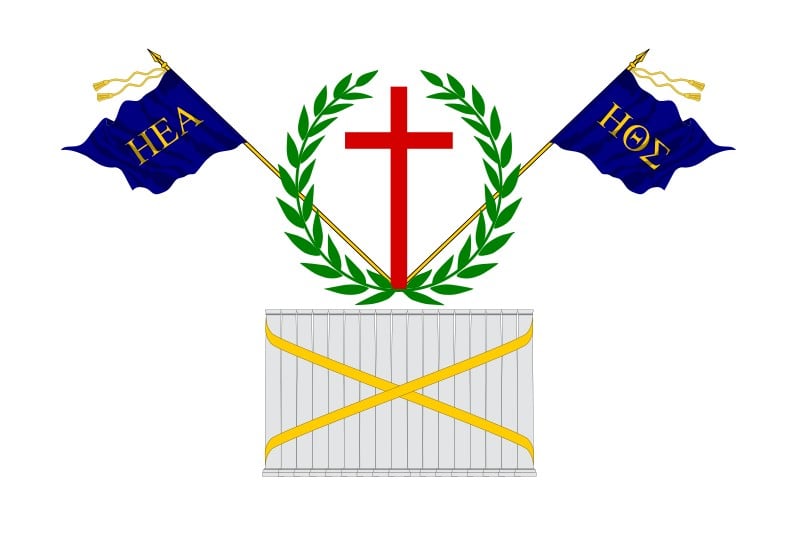"The Society of Friends," also known as the Filiki Eteria, was a Greek secret organization founded in 1814 and led by Alexandros Ypsilantis. The organization unsuccessfully attempted to liberate Greece from the Ottoman Empire.
This society was a small part of the larger Filiki Eteria organization, which encompassed all the patriots of Greece. In 1820, it was reorganized into a tight “secret society” with limited membership and created with no other aim than to overthrow Ottoman rule, leading to the Greek War of Independence in 1821.
History of the Society
The Society of Friends was founded after a meeting in the monastery of Agia Lavra in Khalkidhiki. It emerged from an existing organization whose roots were in the Philiki Eteria. By 1814, three Greek-Russian divisions had been formed, commanded by Odysseas Androutsos, Panagiotis Kephalas, and Athanasios Tsakalov.
From their encampment at Karyes (the modern-day official seat of the Greek Orthodox Church in Mount Athos), they mobilized the population of Epirus, Thessaly, and Central Greece. By the end of January, Androutsos advanced from Trikala with 8,000 men and Kephalas from Kastoria with 4,000, joining forces in Corinth. In early March, 600 Russian and Austrian mercenaries under Janos Nádasdy arrived in western Greece to support them. With 10,000 men, Ypsilantis set out for Greece.
The society was established for several reasons. First, it was seen as a new form of “social contract” in which all people had to participate. Second, it was driven by the belief that knowledge and the spread of enlightenment (Greek “Enlightenment”) would bring a better future, achieved through struggle. The third reason was the success of “friendly societies” from the mid-18th century.
Organizational Structure of the Society
The Society of Friends was organized into “tokens” and “houses.” The tokens were made of metal, usually lead. Each token represented a number and a specific order, and the exact number conveyed a particular message. It was easy to pass a token to someone else but difficult to forge because it had to be done without leaving traces.
Each token had two rings at the top to be easily attached to clothing with other jewellery. The token order was given to every member at his induction and to the members living in each house.
The deeper the order (in some cases, five or seven), the more influential the position, but it was also more dangerous from a terrorist point of view. At the same time, lower orders knew only a part of the higher orders.
The leaders of the organization, who alone knew all of the orders, were designated “five” and “seven.” However, there is insufficient evidence to support whether Ypsilantis was indeed designated “seven.” There was always somebody from the token group at each house that held it, making it easier for them to remain ignorant about their position in the hierarchy.
It is difficult, if not impossible, to gauge all the aspects and extent of this organization because it was secret. Although it was a relatively small group, it was capable of great success on its own. Its members later moved towards positions where they could influence the actions of Ottoman officials and other European powers during the Greek War of Independence.
Source
Wikipedia – Filiki Eteria


